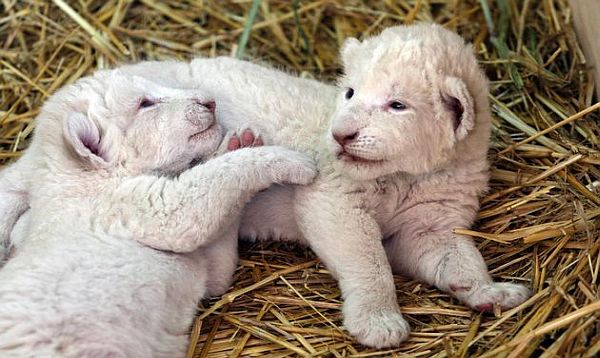Puebla, Mexico - Two cubs from one of the world's most endangered species are being hand-reared at a Mexican zoo. The albino cubs were born in Loro animal park on July 18, and weigh 1.2 kilos (2.6 lb) each. They were removed from first-time mother "Numbi" and put in an indoor den after she failed to immediately breast-feed her cubs.
Zoo keepers at the animal park are working around the clock to feed the young felines some 50 to 100 millimetres of formula every two hours. At just five days old, vet student Andrea Sumohano Rivera said the two cubs have very distinct personalities.
"One of the cubs is very restless all the time. She wants to climb, wants to be on top, biting, licking. She is very active and eats a lot. The other is more sleepy and calm and gets angry when her sister disturbs her," she said.
Zoo keepers will continue to hand feed the cubs until they are three-months-old before they move to chicken and red meat.
Originally South African in origin, the Mexican-born cubs were born to white tigers especially imported into the Latin American country. "Loro" zoo has been instrumental in helping preserve the endangered species with a specialist breeding programme to save the endangered big cats.
"In the case of the white lions, the male lion has been in the park for three years and the female lion two years and three months, they're from South Africa. In South Africa we will only find this species in very specific reserves as their colour prevents their natural hiding techniques from hunters. Remember that the animals depend on their colour as a camouflage in the environment to evade being hunted. The white lions can be easily seen and rarely survive in the natural environment."
The last white lion, native to the Timbavati region of South Africa, was seen in the wild in 1994, after which they were technically extinct outside captivity, decimated by poaching and loss of habitat.


